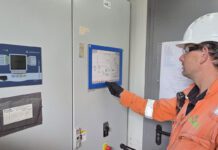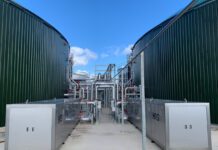ADBA’s Training, Safety and Environment working group has published a tool and accompanying guide to help AD operators and developers to determine the secondary containment provisions that should be in place at their site.
The need for this work was identified by Terry Brownhill (Capita PROjEN) who has chaired the working group since ADBA was founded in 2009. The group recognised a lack of specific guidance on secondary containment for the AD sector and decided to fill this gap, both to address the challenges that operators were facing in understanding the requirements of the regulations and also to ensure that there is a consistent approach across the industry that provides high standards of environmental protection.
The group liaised with the Environment Agency and other stakeholders to raise awareness of the work and to gain their contributions. The tool and guide was then developed by a number of members of the group, with the work finalised in a seminar session at UK AD & Biogas 2016.
Commenting, Terry Brownhill said:
“We hope that the tool and guide will prove useful and informative to all those in the AD industry. Those designing new facilities can use the tool to understand the type of containment that they may need to put in place and existing operators can use it to review their existing arrangements. I would like to thank all those members of the group who contributed to this work.”
The group recommend that secondary containment is considered at the earliest stage of an AD project and that the developer keeps in touch with the environmental regulator throughout the design, planning and construction process. This allows the developer to factor in the likely capital expenditure associated with secondary containment at the start of the project.
This advice is echoed by the Environment Agency’s Darren Legge, who welcomed the development of the guidance: “As outlined within the guide, early discussion with the Environment Agency is strongly recommended to ensure that both the location and design of your plant and secondary containment is suitable.”






